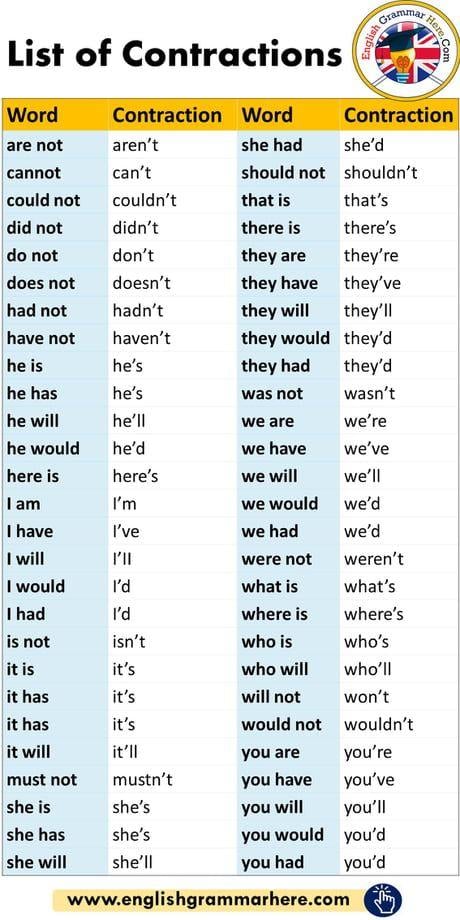Contractions are commonly used in written and spoken English to shorten a group of words by omitting certain letters or sounds. In most cases, a contraction uses an apostrophe to represent the missing letters.

The list of contractions above represents some of the most common examples used in written English. Using contractions is also very common in spoken English; however, native speakers don’t always take the time to pronounce them precisely. Because of this, English learners can easily fall into the trap of writing contractions incorrectly.
When speaking, we might pronounce could’ve, should’ve, and would’ve in such a way that they actually sound like “could of,” “should of,” and “would of.” However, you should never write could of, should of, or would of, in this context. Just remember that could’ve, should’ve, and would’ve are contractions that mean could have, should have, and would have.
When to use contractions
The use of contractions in everyday speech is very common among English speakers. In contrast, in written English they are often considered to be relatively casual. If you are writing something formal you might need to avoid many of the above contractions in favour of using the full forms of the words.
Are you interested in teaching English as a foreign language?
Get your TEFL or TESOL certificate with ITTT.
Register now & get certified to teach english abroad!


